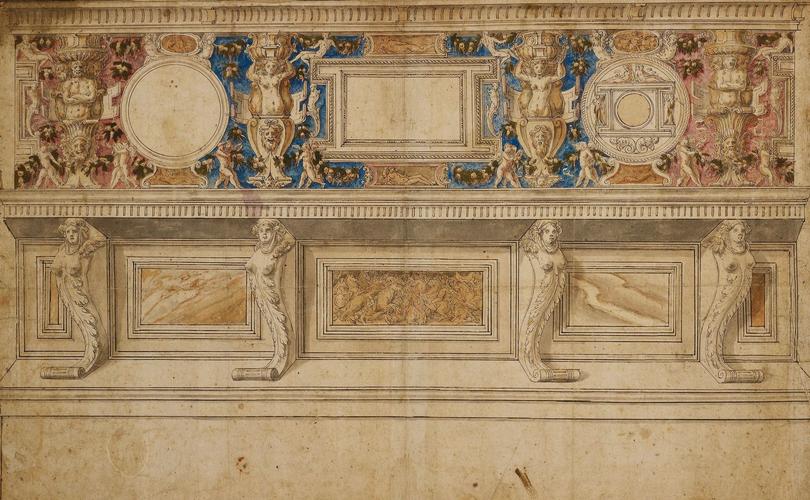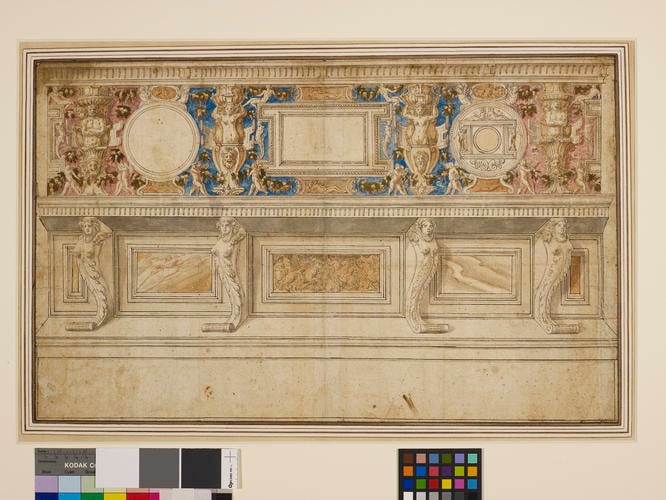-
1 of 253523 objects
A design for a bench c.1540
Pen and black ink with watercolour | 58.3 x 36.0 cm (sheet of paper) | RCIN 906852
-
A design for a bench in pen and ink with watercolour.
Rosso Fiorentino came to France in 1530 and was one of the earliest artists involved in Francis I’s renovation and expansion of the chateau of Fontainebleau. His style, learned with Andrea del Sarto and others in Florence, deeply influenced the artists who worked with him at the chateau, among them René Boyvin, Pierre Milan and Antonio Fantuzzi, all of whom made engravings after his work. After Rosso’s death in 1540, his colleague Primaticcio became the leading artist at Fontainebleau, supervising works there for the next 30 years.
This colourful design for a bench is by an artist who was probably working in the circle of Rosso at Fontainebleau. The decorative vocabulary and particularly the blank faces and empty eyes of the figures are characteristic of the work of Rosso and his associates. Elements of the design are also close to ornamental engravings by René Boyvin, particularly the caryatids with baskets on their heads and the decoration which has been delineated in the right-hand panel. General comparisons can also be drawn with the surviving Galerie François I at Fontainebleau, which includes panels on which are seated nude figures surrounded by putti holding swags and separated by caryatids. These decorative elements had travelled from Italy with the artists Francis I brought from the peninsula; over the next century the fashion for this form of ornament would spread across northern Europe.
The bench may have been intended for one of the many chateaux being redecorated and renovated in France at this time. It bears no personal symbol, such as Francis I’s salamander, which might allow it to be connected to a particular patron. The battle scene in the lower register is a generic one, and a common theme in interior ornament at this time. Such scenes were both a demonstration of a patron’s military might and an emulation of the classical friezes to which much art and architecture of the period referred. The bright colouring of the drawing may suggest that it was made to demonstrate a design to a patron, and it reminds us, too, that the interiors of sixteenth-century palaces, which often survive only in monochrome engravings or small fragments, would have been alive with polychromy.
Catalogue entry adapted from The Northern Renaissance. Dürer to Holbein, London 2011Provenance
Probably Royal Collection by c.1810
-
Creator(s)
-
Medium and techniques
Pen and black ink with watercolour
Measurements
58.3 x 36.0 cm (sheet of paper)
Other number(s)
RL 6852

